Non-traditional pets are those species that are not within the standard grouping of domesticated animal companion species. For the purposes of this course, this includes backyard poultry, caged birds, fish in tanks, small mammals (mice, rats, hamsters, gerbils), larger mammals (guinea pigs, chinchillas, rabbits, ferrets), hedgehogs, sugar gliders, reptiles, and amphibians. There is great variety in this group of species. For each, information will be provided about biology, housing, nutrition, behavior, biosecurity, parasite control, reproduction control, vaccinations, and common disorders.
Many of these species are prey animals and can be quite ill before showing any signs of disease. It is good to recommend to clients that they regularly perform a brief physical examination on their pet, check the animal’s housing, and note any changes in behavior. Ideally this will done on a very regular basis, for example weekly, and all results will be documented and shared with the veterinarian as appropriate.
Maintaining these animals in captivity while ensuring their physical and mental health can be challenging. Specifics of housing and nutrition will be addressed in each section. Enrichment is a term commonly used to describe the provision of physical and mental challenges for animals, to permit them to show as many of their normal behaviors as they can. This stimulation helps prevent negative behaviors such as overgrooming, pacing, and aggression. Examples of kinds of enrichment include:
- Physical enrichment – Stimulating natural behaviors such as gnawing, digging, hiding, climbing, and perching on high spots to permit them to see predators
- Mental enrichment – Incorporating problem-solving activities that permit the animal to change their environment such as tunnels or other challenges to get to all parts of the enclosure
- Social enrichment – Ensuring social species are housed with appropriate groupings that encourage normal social behaviors, such as grooming, while permitting appropriate spaces for hiding and minimizing chance of fighting
- Sensory enrichment – Changing environmental stimuli to mimic natural changes such as changes in room temperature, light, or humidity that may mimic the seasons, changing the arrangement of objects within the enclosure, and appropriately providing supervised time out of the cage or outdoors
- Nutritional enrichment – Seeking food, or foraging, is a huge part of the day for most animals in the wild. Ways to increase foraging behaviors for captive animals include scattering food, hiding food within the habitat or using puzzle toys that distribute food slowly, offering food in unique ways (frozen, hanging by a string), and decreasing predictability by offering food at differing times of day
The rest of this appendix is a brief description of the most common disorders in non-traditional pets. This is not intended to be a comprehensive listing. Species are listed in order of popularity and more information is included for the more popular species. Information is presented at the level of training of 1st year veterinary students who have had limited coursework in pathology and agents of disease and no medicine / surgery courses. Many of the concerns for which non-traditional pets present are due to improper husbandry. See the introductory modules for information about housing and diet. More information about disorders, anesthesia and surgery, and appropriate use of antibiotics and other drugs in these unique species will be available for all students in the Avian Core course and for those students who choose to take electives in 3rd and 4th year, and can be found in the following references:
Mitchell MA, Tully TN. Manual of exotic pet practice. Saunders Elsevier, St. Louis MO, 2009 (PRK will add link to electronic version available through the University library system for students).
Lafeber Vet – Students must register on this site to gain access to instructional materials; registration is free. This site has differential lists by species based on presenting complaint to aid in working through case presentations.
University of Rochester Medical Center – Body condition scoring in exotic species
 CAGED BIRDS
CAGED BIRDS
FEATHER PICKING
Feather picking is an abnormal expression of the normal behavior of grooming or preening in birds. Causes include genetic predisposition (most common in African grey parrots, lovebirds, Eclectus parrots, cockatoos, conures, parrotlets, monk parakeets, and macaws), infectious skin diseases, allergies, liver or pancreatic disease, and trauma. This may also be a purely behavioral disorder, often due to inappropriate environment or stress. It can range from mild breaking or pulling of feathers in one area to extensive self-mutilation. Diagnosis requires a complete work-up with bloodwork and testing for specific diseases, such as psittacine beak and feather disease and polyomavirus. For treatment, underlying disorders must be addressed. Mechanical prevention of feather picking with use of an Elizabethan collar or use of noxious agents like bitter apple are not recommended. Attempts should be made to identify and remove any stressors. Owners should strive to find an alternative to persistent caging of the bird, provide enrichment for the bird, and create a stable social environment. Medical therapies for behavioral causes of feather picking have been described but should not be used as a sole form of treatment.
EGG BINDING
Egg binding is failure of one or more eggs to be laid within the normal time limits for a given avian species. Underlying causes include hypocalcemia, obesity, environmental stressors including low temperature and humidity, abnormal egg formation, cloacal masses, and disorders of the oviduct. Species at greatest risk are cockatiels and budgerigars; incidence is also high in lovebirds, canaries, and finches. Clinical signs include extreme depression, sitting on the bottom of the cage with ruffled feathers and wings spread, anorexia, straining with or without passing droppings, paralysis of the legs, and cloacal / oviductal prolapse. Retained eggs may be palpable on gentle abdominal manipulation. Radiographs may be taken; if the bird is suffering from hypocalcemia, the egg shells may be poorly mineralized and difficult to see. Abdominal ultrasound also may be used for diagnosis. The first line of treatment is supportive care (housing the bird in an environment with increased heat and humidity, providing fluids and nutritional support) and calcium supplementation (SQ, IM, or orally). Manipulation of the egg by gentle massage must be done with the bird anesthetized; the egg should be lubricated with a water-soluble lubricant and great caution must be taken not to injure the oviduct. If necessary, consider drug therapy to cause uterine contractions (oxytocin, arginine vasotocin), ovocentesis (puncture and collapse of the egg through the cloaca or through the skin) or salpingectomy (surgical removal of the oviduct). After the bird has been treated successfully for egg binding, attention must be paid to the environment and enrichment, to try to minimize excessive egg laying in the future. Simple options include no longer housing the bird with a mate, removing anything that acts as a nest box, improving quality of the diet, and ensuring a maximum daylength of 10-12 hours daily.
BEAK DEFORMITIES
In psittacine birds, the upper beak grows continually lengthwise and outward. The most superficial surface is dead, keratinized tissue, like our fingernails, that flakes or chips off. Overgrowth of the upper beak may be due to trauma, liver disease, lack of light exposure and subsequent vitamin D deficiency, hypovitaminosis A (see below), or lack of natural grooming aids to wear away the beak (cuttlebones, lava rocks, hard perches). Diagnosis is by visual inspection. Treatment involves recreating the normal shape of the beak and removing any flaked or chipped areas. Beak trimming can be done with a cutting instrument or a rotation disk tool. It is better to trim too little than too much.
HYPOVITAMINOSIS A
Vitamin A is a group of fat-soluble vitamins with similar activity that includes support of epithelial cell growth and repair, immune function, bone growth, vision, and maintenance of feather color. All-seed diets are deficient in vitamin A. Signs associated with deficiency of vitamin A include squamous metaplasia and subsequent dysfunction of mucous epithelial cells lining the respiratory and gastrointestinal (GI) tracts, sinusitis, anorexia, poor feather condition, night blindness, neurologic signs, and decreased vocalization. Diagnosis is based on history of an all-seed diet and physical examination findings. Treatment includes a change to a high-quality pelleted diet and supplementation with vitamin A.
SINUSITIS
Sinusitis in birds may be due to environmental factors (strong fumes, household temperature extremes, poor ventilation, dry air), diet (hypovitaminosis A), bacterial infections, or a combination of the above. Affected birds present with sneezing, ocular / nasal discharge, exophthalmos (protrusion of the eye(s)), anorexia, lethargy, and weight loss. Birds will have dried discharge on the feathers around the nares, will shake their head, and yawn. Diagnosis is by imaging (radiography to rule-out pneumonia) and culture of nasal flushes or choanal swabs. Treatment is supportive, with fluids and nutritional support, and may include direct administration of ophthalmic antibiotics into the nares, nebulization, increased environmental humidity, and treatment of underlying factors.
ENTERITIS
In birds, droppings include feces, created in the GI tract, and urates and urine, created by the kidneys. Diarrhea is any increase in the liquid component of droppings and so may be due to GI or urinary tract dysfunction or to any systemic condition that causes polyuria (increased urine formation). Enteritis is inflammation of the GI tract and may be due to bacterial, viral, fungal, or parasitic infections; cloacal papillomas / warts; obstruction in the GI tract; or antibiotic use. Less common causes include GI neoplasia, toxins, stress, systemic disease, or dietary changes. Affected birds show loose droppings, sometimes without an obvious fecal component, and may show non-specific signs of illness including anorexia, ruffled feathers, and lethargy. Diagnosis is through history and physical examination findings, fecal sampling for evidence of parasitism, basic bloodwork to rule out systemic disease, radiographs to assess for obstruction, and possibly specific testing for things like toxins. Treatment involves management of identified underlying causes, rehydration with fluid therapy, feeding of a low-fat, easily digestible diet, and appropriate antibiotic or antifungal medications.
NEOPLASIA
Most common cancers in birds are those of the skin, oronasal cavity, respiratory tract, and abdominal organs. Neoplasia is more common in aged than in young birds. Lipomas (benign fatty tumors) are common in obese psittacine birds and develop most commonly on the sternum and abdomen. Lipomas are fluctuant and non-painful. Diagnosis of internal masses requires radiography. Fine-needle aspirate or biopsy can be used to differentiate benign from malignant external masses and possibly to identify tumor type. Surgical removal is the most common treatment.
 FRESHWATER TROPICAL FISH
FRESHWATER TROPICAL FISH
ICH
This is also called white spot disease or ick, and is caused by the protozoan parasite, Ichthyophthirius multifilis. Infected fish present with small raised blisters on the skin or fins. Fish may also show unusual behaviors such as flashing (rubbing or banging their sides against things in the tank), gulping air at the water’s surface, or jumping out of the water. The parasite life cycle includes parasitic forms on the fish and parasitic forms in the tank. One mature parasite can produce hundreds to thousands of infective offspring in less than 24 hours at a water temperature from 72-77°F. Diagnosis is by visual inspection. Treatment on the fish itself can be difficult as the parasite may be deep enough in the tissues to avoid exposure to chemical treatments. Chemicals used include formaldehyde, malachite green, and copper sulfate. Non-chemical treatment methods include adding salt to the water, increasing water temperature, and changing the water. Prevention is preferred to treatment. Because the parasite spends time in the tank, if there are no fish to infect, it will die off. Tanks should be set up with all equipment and decorations and left to run for at least one week before fish are added. Newly purchased fish should be quarantined in a separate tank for 7-10 days and verified free of parasites by visual inspection before being added to an established group of fish. Aquatic plants also should be kept in a separate tank for 5-7 days before being added to an established tank.
AMMONIA TOXICITY
Ammonia can build up in a tank from use of chemically treated tap water to refill the tank, from inadequate cleaning and subsequent decomposition of organic matter in the tank, from overfeeding and build up of decaying food in the tank, and from the fish themselves, who naturally excrete ammonia through their gills. Elevated concentrations of ammonia may be evident in the fish as their gills become red or purple, the fish start gasping at the surface for air, and they lose their appetite and normal activity level. Later in the course of the toxicity, red streaks will appear on the fish’s body and fins. Eventually the fish will hemorrhage internally and externally, and will die. Diagnosis is by testing of water quality. Ammonia should be less than 1 ppm. A change in 50% of the water and lowering of the pH should be done immediately. Feedings may be discontinued or restricted to prevent ongoing buildup of organic matter. No new fish should be added to the tank until ammonia levels are normal.
FIN ROT
Fin rot is bacterial infection secondary to stress, such as overcrowding or presence in the tank of fish that fight. The condition is most common in tanks with poor water quality and low water temperature. Early in the course of disease, the edges of the fins will appear milky and start to fray, leaving a ragged edge. Fins will gradually get shorter as areas begin to slough off. Bloody patches will appear as the disease progresses. Diagnosis is by visual inspection. Treatment includes changing the water in the tank and removing debris from uneaten food. Test the water quality and ensure the pH and temperature are correct for the species of fish in the tank. Appropriate antibiotic therapy should be instituted for individual fish.
VELVET
Velvet, also known as rust or gold dust disease, is caused by a parasite that is classified by some as a protozoan and by others as an algae, named Oodinium or Piscinoodinium. Poor water quality, changes in water temperature, and other stressors may worsen disease. Similar to ich (see above), the parasite spends time on the fish and some time in the tank. Golden spots develop on the fish and may be difficult to see with the naked eye. Other physical signs of disease include fine yellow or rust-colored film on the skin, and peeling off of the skin. Behavioral signs of infection include flashing, lethargy, anorexia, and labored breathing. Diagnosis is by visual inspection. Treatment includes raising the water temperature and dimming the tank lights for several days, and treating the aquarium with salt or copper sulfate. Prevention is as for ich.
ANCHORWORM
Anchorworms are parasites commonly found on goldfish or koi. They attach directly to the fish under the scales. Females extend their reproductive structures out from beneath the scales; this gives the appearance of a short, white worm. These parasites are visible to the naked eye. As they fall off the fish, they leave behind an area of hemorrhage or fibrosis. Diagnosis is by visual inspection. Treatment requires removal under sedation so the entire parasite can be removed. The tank must be treated for juvenile forms of the parasite; over-the-counter anchorworm treatments usually are effective against juvenile forms. Alternatively, substrate and décor can be removed and the water in the tank run through a UV light. Prevention is as for ich.
DROPSY
This is an old term for edema or ascites, swelling of soft tissues due to an accumulation of water or other fluids. This is due to a bacterial infection; many fish will carry bacteria and be asymptomatic. Stress is an underlying cause of the disease and may be due to poor water quality, spikes in ammonia or nitrites, a large drop in water temperature, improper nutrition, or aggressive tank mates. Affected fish will have severely swollen bellies and their scales will stick out, giving the fish a pinecone-like appearance. The eyes may bulge and the anus may become red and swollen. Other signs include anorexia, ulcers on the lateral line, curving of the spine, redness of the fins, and swimming near the surface. Eventually the fish will undergo organ failure and death. Affected fish should be removed to a hospital tank. Water in the hospital tank should have added salt and the fish should be treated with antibiotics either in the food or in the water. Dropsy is prevented by maintaining a clean tank with good water quality, not overcrowding the tank, and not overfeeding the fish.
GILL FLUKES
Flukes are trematode parasites that live and reproduce in the gills of tropical fish. Flukes attach to the gills with hooks that may damage the gills, decreasing their ability to take in oxygen, and permitting secondary bacterial infection. Infected fish will flash and later in disease, become lethargic and spend time in a corner of the tank with the fins clamped to the body. Fish may also gasp for air and have swollen gills. Definitive diagnosis is by a skin scrape or gill biopsy. The flukes lay eggs which fall into the tank and hatch out in 2-4 days. If the newly hatched fluke does not find a host, it dies. Treatment of the tank may kill newly hatched flukes but will not affect the eggs so multiple treatments are required. A specific anti-parasitic drug should be used. Prevention is as for ich.
SWIM BLADDER DISEASE
Swim bladder disorders are most common in goldfish and bettas. Possible causes include distension of the stomach from eating too much food, eating food that expands (for example, freeze-dried foods) or gulping air; low water temperature; disorders causing enlargement of abdominal organs; parasites or bacterial infections; and trauma to the swim bladder. Abnormal function of the swim bladder interferes with the fish’s buoyancy so they are unable to float or sink as they wish. Some will be perpetually at the top or bottom of the tank while others will float upside down or on their sides and will be unable to achieve normal position in the water. Initial treatment includes not feeding the fish for several days and increasing water temperature to 78-80°F. After the initial fast, consider feeding the fish cooked and skinned peas (microwave or boil a frozen pea for a few seconds, remove the skin and feed one pea per day for a few days). Other treatments include adding salt to the water, reducing flow of water if there is a strong current in the tank, and hand feeding the fish. If there is no response in a reasonable period of time, the fish should be euthanized. Prevention includes keeping the tank clean, not overfeeding the fish, feeding food that sinks, rehydrating dried foods before feeding, thawing frozen food before feeding, and not overcrowding the tank.
 RABBITS
RABBITS
GASTROINTESTINAL (GI) STASIS
GI stasis is also called ileus, and is slow emptying of the stomach and movement of ingesta through the GI tract. Roughage in the diet is important to ensure proper digestion and ongoing function of the GI tract. When GI motility slows, hair from grooming and ingesta accumulate in the stomach. Because rabbits cannot vomit, the material in the stomach dehydrates and becomes even more difficult to pass. This condition can be caused by improper amount of roughage in the diet or by anything that causes a rabbit to stop eating. Clinical signs include anorexia, decreased production of feces, signs of pain such as bruxism (teeth grinding) and a hunched posture, and reluctance to move. Diagnosis is by history and physical examination findings; a doughy or distended and firm stomach and cecum, and gas-filled intestinal loops will be palpable. Radiographs may be used to demonstrate gastric distension with food, fluid, or gas. Treatment includes supportive care including fluid therapy; encouraging exercise; feeding fresh, moistened greens and good-quality long-stemmed grass hay as well as an appropriate pelleted diet; encouraging drinking; use of a feeding tube for animals that will not directly eat food and water; and using appropriate pain medications and gastric prokinetic agents. Some animals may require surgery to relieve obstruction. Prognosis is good if the condition is recognized quickly.
DENTAL MALOCCLUSION
Rabbits are predisposed to dental disease by congenital malocclusion or by poor diet, without adequate wear on the continuously erupting incisors. Signs of dental disease include lack of appetite, dropping food from the mouth while chewing, and drooling. Overgrowth of incisors is easily visible on physical examination but overgrown cheek teeth require additional examination techniques. Because rabbits have a small oral cavity, complete evaluation of cheek teeth may require the use of an otoscope with a large diameter cone, sedation and passage of a speculum, and/or dental radiographs. Overgrown incisors and molars can be corrected as in other herbivore species, using a high-speed trimming dental burr or dental disc. Malocclusion is seldom cured long-term by trimming and additional visits for further dental care may be needed for the life of the animal.
ABSCESSES
Abscesses can form anywhere on the body and usually develop after some sort of skin injury and colonization of normal skin flora at the site. The predominant clinical sign is a lump with localized hair loss above it. If rupture has occurred, discharge may be seen although rabbits often develop a caseous discharge that does not readily drain from the cavity. Diagnosis is by visual inspection. Because rabbit abscesses usually contain a firmer, more caseous pus than that in other species, lancing is not effective for diagnosis or treatment. Surgical excision and appropriate antibiotic treatment are recommended.
PASTEURELLOSIS
Infection with the bacterium Pasteurella multocida is most commonly associated with upper respiratory tract infection, or snuffles, in rabbits. This organism is common in the environment and is readily passed between rabbits. Most rabbits carry it as normal flora in the respiratory tract without signs of illness. Risk factors include stress, concurrent disease, use of immunosuppressive steroid medications, and poor husbandry. Infection usually begins with excessive colonization of the bacterium in the nose, spreading to the sinuses and bones of the face, then to the ears, eyes, and lower respiratory tract and, in extreme cases, throughout the body. Clinical signs include sneezing, clear to bloody nasal discharge, staining of the front paws, epiphora (excessive tearing), conjunctivitis, neurologic signs (head tilt or loss of balance) with infections of the inner ear, dyspnea (difficulty breathing) and non-specific signs such as anorexia and depression. Diagnosis is by history and physical examination. Pasteurella can be cultured from nasal discharge. Rabbits are obligate nasal breathers so treatment must include clearing of the nasal passages. Physical cleaning of the nostrils and humidification of the environment to help mobilize nasal discharge, and nebulization may be used. Address husbandry issues such as removing dusty hay or bedding, and ensuring the cage is clean with minimum ammonia concentrations. Long-term antibiotic therapy is indicated.
OTOASCARIASIS (EAR MITES)
Ear mites are transmitted between rabbits. The mites lay eggs in the wax and debris of the ear canal. Antigenic material in their feces and saliva is extremely irritating to the external ear canal, causing severe scratching (pruritus) in rabbits. The rabbit will scratch their ears and shake their head and may not want their head touched by the owner. Dark discharge will encrust the ear canal. Diagnosis is by identification of the mite in the ear discharge using a microscope. Treatment involves use of an appropriate anti-parasitic drug topically, possible use of an anti-inflammatory drug, soaking of crusts with mineral oil to help them to fall away naturally, and trimming of the nails on the hind feet to minimize trauma induced by scratching. The enclosure should be decontaminated to decrease risk of re-infestation.
ANTIBIOTIC DYSBIOSIS
In the rabbit, the intestinal microflora are very sensitive to orally administered antibiotics. Alteration in the microflora is associated with fluctuations in intestinal pH and proliferation of bacterial species that release endotoxins. Endotoxemia may lead to sudden death. When using antibiotics in rabbits, concurrent use of probiotics may minimize risk of dysbiosis and caution must be taken not to induce GI stasis.
ENCEPHALITOZOON CUNICULI
E. cuniculi is an organism that has been characterized as a microsporidian (fungal) parasite. Animals shed spores in urine that are ingested, spread to gut-associated lymphoid tissue, and then to the bloodstream and to major organs, with a predilection for the kidney and the brain. Animals may carry the organism for years with no clinical signs. Clinical signs include neurologic signs (torticollis (muscle spasm of the neck with turning of the head to one side), nystagmus (shaking of the eyeballs), ataxia, rear limb stiffness or paralysis), and urinary incontinence. Diagnosis in living animals is difficult because antibody testing demonstrates only exposure, not necessarily disease. Paired titers showing a rise in antibody concentrations supports an active infection. Treatment includes use of an anti-parasitic drug, anti-inflammatory drugs, and possibly a drug to control neurologic signs, such as meclizine (Dramamine™).
UTERINE ADENOCARCINOMA
Uterine adenocarcinoma is the most common cancer in female domestic rabbits, reported to be as high as 80% in unspayed does over 3-4 years of age. This is a slowly progressive tumor that invades locally and spreads to distant tissues late in the disease course. Clinical signs include hematuria (bloody urine), bloody vulvar discharge, and, late in disease, anorexia, lethargy, dyspnea, and anemia. Cystic mammary glands also may be seen. Diagnosis is by physical examination, bloodwork, and radiographs or ultrasound. Ovariohysterectomy (spay) is curative if the tumor has not invaded tissue outside of the uterus. Spaying does when young is preventative.
RABBIT HEMORRHAGIC DISEASE
Rabbit hemorrhagic disease is caused by a calicivirus. It is highly contagious and of high morbidity and mortality. A new variant is spreading through wild rabbit populations in the United States as of 2019 and domestic rabbits also are at risk. Updated information about this emerging concern in rabbits is available through the Minnesota Board of Animal Health.
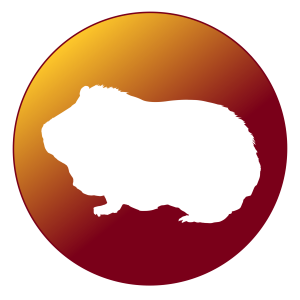 HAMSTERS
HAMSTERS
NEOPLASIA
Benign tumors are more common than are malignant tumors in hamsters. Common tumors include adrenal tumors, and lymphoma associated with the lymph nodes, thymus, spleen, and liver. Signs may be non-specific and include anorexia, depression, abdominal pain, and diarrhea. Lymphoma may be associated with dermatitis and alopecia (hair loss). Anemia may be present. Diagnosis is by visual inspection or imaging (radiography or ultrasound). Fine-needle aspirate or biopsy may be used to differentiate benign from malignant tumors. Surgical removal is the treatment of choice.
WET TAIL
Wet tail is the common name for a variety of inflammatory conditions of the GI tract. Bacterial and parasitic agents have been implicated in the disease, which also is associated with stress, high temperature or humidity, overcrowding, malnutrition, and dietary changes. Clinical signs include diarrhea, anorexia, weight loss, dehydration, and scruffy hair coat. Diagnosis is by visual inspection. Treatment is with appropriate antibiotics and supportive care, including fluids. Mortality rate is high in young hamsters (3-10 weeks old). Use of antibiotics in cage mates to prevent disease spread generally is unrewarding.
ABSCESSES
Abscesses can form anywhere on the body and usually develop after some sort of skin injury and colonization of normal skin flora at the site. The predominant clinical sign is a lump with localized hair loss above it. Diagnosis is by visual inspection. For treatment, abscesses can be lanced, the defect rinsed with antiseptic, and appropriate antibiotic therapy instituted.
DEMODECTIC MANGE
Hamsters may carry mange mites with no signs of skin disease. Overt disease often is secondary to an underlying problem that diminishes immune function, such as neoplasia, hyperadrenocorticism, kidney disease, malnutrition, or stress. Demodectic mange also is more common in aged hamsters than in young hamsters. Clinical signs include patchy alopecia, scaling, and crusting beginning on the neck and dorsum and gradually moving over the rest of the body. Diagnosis is made by skin scraping or tape prep to identify the mite using the light microscope. Treatment is with an appropriate anti-parasitic agent administered systemically or topically.
DENTAL MALOCCLUSION
Because they have continuously growing incisors, if the teeth are not worn down by normal activity or if malocclusion is present, the incisors can overgrow, causing significant oral disease. This is easily identified on physical examination. Because the teeth have no nerve except at the base, they can be trimmed as needed by a veterinarian using a dental disc. Hamsters should be provided with a high roughage diet and things on which they can gnaw, such as pesticide-free wood and cardboard.
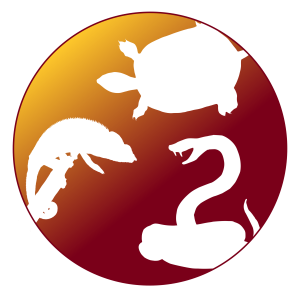 LIZARDS
LIZARDS
NUTRITIONAL SECONDARY HYPERPARATHYROIDISM
Metabolic bone disease, nutritional osteodystrophy, and rubber jaw are other names for this disorder. Calcium supports cardiac and skeletal muscle contraction, blood clotting, transmission of nervous impulses, and bones and teeth. Phosphorus also supports bones and teeth. Calcium and phosphorus must be present in a specific ratio to ensure these processes occur. Calcium is stored in bone. Normally, when calcium concentrations rise in blood, calcitonin is released and pulls calcium from the blood, depositing it in bone. When calcium concentrations are low in blood, parathormone increases absorption of calcium from the kidney and intestine and draws calcium from bone. Vitamin D is produced with exposure to ultraviolet light (UVB) and increases absorption of calcium. Nutritional secondary hyperparathyroidism is a disorder of husbandry. Animals fed a diet with inappropriately low calcium and/or inappropriately high phosphorus will perceive themselves to be in a hypocalcemic state and will produce excessive parathormone, leading to weakening of the bones and teeth, and abnormal cardiac and nervous functions. Lack of adequate exposure to UVB light and subsequent low vitamin D concentrations inhibits absorption of calcium from the diet. Affected lizards may have swollen hind legs; spinal deviations; a kinked tail; problems lifting the body and tail off the ground; jerky movements of the limbs and head; may hold their mouth abnormally with a swollen or rubbery jaw and droopy lips, and drooling; and, in chameleons, may show inability to control the tongue. Diagnosis by radiography is definitive; bones will have reduced cortical density and fractures may be evident. Treatment includes increasing calcium in the diet. Animals should be handled carefully, placed on strict cage rest, and housed with no cage mates until bone strength returns. UVB lighting should be available to increase vitamin D production. Pain medications can be used if fractures are present.
MOUTH ROT
This is stomatitis, inflammation of the mouth and gums. This is caused by infection with Gram negative bacteria. Primary pathologies are stress, improper temperature and humidity, poor diet, overcrowding, oral trauma, and hypovitaminosis A. Clinical signs include asymmetry or inability to close the mouth, red and swollen gingiva, mucus or discharge from the mouth, and open-mouth breathing. Non-specific signs are anorexia and lethargy. Diagnosis is by visual inspection. Culture of a deep pocket of infection can be used to guide antibiotic therapy. Treatment includes debridement and irrigation of inflamed tissues with antiseptic and topical or systemic treatment with anti-bacterial drugs. Husbandry issues should be addressed and underlying disease or vitamin A deficiency should be treated.
SKIN DISEASE
A very common infectious cause of skin diseases in lizards is mites. Affected lizards may be asymptomatic or may show scratching, secondary bacterial infection, and anemia. The mites are visible to the naked eye as small red dots. Topical anti-parasitic drugs can be used for treatment. Non-infectious causes of skin disorders in lizards include trauma and burns. These usually are due to housing with incompatible cage mates or to improper setup of the habitat. A final skin disorder in lizards is dysecdysis or improper shedding. Treatment includes (i) warm water soaks (77-85°F for 15-60 minutes followed by gentle pulling of old scales with a piece of gauze, (ii) correction of underlying husbandry issues, and (iii) treatment for underlying skin diseases.
EGG BINDING
Egg binding is common with a reported incidence of 10%. In non-breeding lizards, the biggest concern is egg retention or post-ovulatory egg binding, where a lizard forms one or more eggs but does not lay the eggs in a timely fashion. Underlying husbandry causes include low dietary calcium concentrations, inadequate temperature or humidity, and inadequate nesting sites. Underlying pathologies include obesity, dehydration, mechanical obstruction, reproductive tract infections, oversized or misshapen eggs, urolithiasis, fecal impaction, or oviductal stricture. Non-specific clinical signs include anorexia, lethargy, dyspnea (difficulty breathing), edema of the extremities, cloacal discharge or bleeding, straining, oviductal or cloacal prolapse, and difficulty walking. Radiography is definitive for diagnosis. Treatment by manipulation of the egg can be difficult as it may be associated with oviductal rupture or prolapse. Medical treatment involves use of a compound that can cause coordinated contractions, either oxytocin or arginine vasotocin. Treatment with calcium may be beneficial. Non-medical treatments include ovocentesis (puncture and collapse of the egg through the cloaca or through the skin) and salpingectomy (surgical removal of the oviduct). Introduction of egg yolk into the coelom is associated with egg yolk peritonitis, manifested by anorexia, lethargy, diarrhea, decreased fecal output, and many changes on bloodwork. Egg yolk peritonitis can be identified on ultrasound by presence of coelomic fluid. Treatment of egg yolk peritonitis involves fluids and exploratory celiotomy and lavage of the coelem.
 TURTLES
TURTLES
AURAL ABSCESSES
These are ear abscesses and are common in turtles and tortoises. These are most likely to occur if the animal is immunosuppressed, as during hibernation; after trauma; if the animal is malnourished; or if it is housed in a very wet or very dry environment. The infection begins in the mouth and moves up through the internal ear canal. Because there is no external ear canal, this localizes as a pocket of pus which becomes dense and firm and will not drain back into the mouth. Clinical signs include swellings on the side of the head or, if rupture occurs, a hole in the head. They head may become asymmetrical. Diagnosis is by history and physical examination. Pus may be visible protruding from the eustachian tube into the mouth on oral examination. Surgical removal of the caseous pus and flushing of the defect is the treatment of choice. The wound is left open to heal on its own; antibiotic therapy may be required, especially if the abscess redevelops.
PNEUMONIA
Pneumonia in turtles may be bacterial or fungal. Infection develops more readily if the turtle is malnourished, is carrying parasites, is housed in unsanitary conditions, or has hypovitaminosis A. Acute disease is associated with gasping and open-mouth breathing, and sudden death. Chronic disease is associated with chronic nasal discharge and respiratory distress. If septicemia (body-wide infection) develops, the turtle may struggle to breathe, appear lethargic or uncoordinated, or convulse. Definitive diagnosis is by radiography; pneumonia is associated with fluid in the lungs. Treatment includes antibiotic therapy, housing at the mid to upper end of the optimal temperature range, nebulization, and treatment of underlying disease.
 GUINEA PIGS
GUINEA PIGS
DENTAL DISEASE
Both the incisors and the cheek teeth are open-rooted and continuously growing. Possible causes of dental disease include lack of a fibrous diet or other things to chew on to grind down the teeth, and malocclusion. This disorder is most common in middle-aged to older guinea pigs. Clinical signs include anorexia, dysphagia (difficulty eating), decreased fecal output, weight loss, hypersalivation, and, in those with tooth root abscesses, swelling of the jaw and ocular / nasal discharge. Diagnosis is by visual inspection. Obvious malocclusion or tooth overgrowth, formation of sharp enamel points on the cheek teeth +/- oral ulceration, food impaction, and abnormal spacing between teeth may be evident on superficial oral examination. Because of the small size of the oral cavity and likelihood of significant dental disease that is not grossly evident, sedation for a full oral examination and radiographs of the skull are recommended. Trimming with a rotating dental burr in the sedated animal is the treatment of choice. Clipping instruments should not be used as they may crush or fracture the teeth. Increase roughage in the animal’s diet to increase tooth wear.
PNEUMONIA
Pneumonia is common in guinea pigs and usually is due to bacterial infection from common organisms that most guinea pigs harbor without signs of disease. Stresses including overcrowding, pregnancy, and illness, increase the chance that pneumonia will develop. Clinical signs include anorexia, ocular / nasal discharge, sneezing, and dyspnea. Diagnosis is by visual inspection and radiography. Culture of the ocular or nasal discharge can be used to direct appropriate antibiotic therapy. If the animal is severely affected, oxygen supplementation, nebulization, and coupage may be required.
SCURVY
Scurvy is vitamin C deficiency. Guinea pigs and primates are two species that cannot synthesize their own vitamin C and so must have a dietary source. Pelleted guinea pig diets invariably contain vitamin C but it is a relatively unstable compound so food that is beyond 90 days from manufacture may have decreased vitamin C concentration. Similarly, vitamin C breaks down in water so supplementation in the drinking water is not effective. Guinea pigs affected with scurvy may show a rough hair coat, anorexia, diarrhea, reluctance to walk, swollen feet or joints, and ulcers on the gums or skin. Diagnosis is by visual inspection. Treatment is replacement of vitamin C.
LYMPHADENITIS
Cervical lymphadenitis is bacterial infection of the lymph nodes on the ventral surface of the neck. Abrasions in the oral cavity allow normal oral flora to colonize the area and eventually cause abscessation of the lymph nodes. Diagnosis is by visual inspection. Guinea pig abscesses usually contain a firmer, more caseous pus than that in other species, so lancing is not effective for diagnosis or treatment. Surgical excision and appropriate antibiotic treatment are recommended.
PODODERMATITIS
This condition also is called bumblefoot. Sores develop on the bottom of a guinea pig’s feet, usually secondary to obesity and housing in cages with wire-bottoms or poorly cleaned floors. Abrasions on the feet permit introduction of bacteria and development of chronic, deep infections. This is a painful condition so clinical signs include lack of willingness to move, lameness, and other non-specific signs of discomfort. Diagnosis is by visual inspection. Treatment includes debridement of non-viable tissue, bandaging, and appropriate antibiotic therapy, and can be challenging.
GASTROINTESTINAL (GI) STASIS
GI stasis is also called ileus, and is slow emptying of the stomach and movement of ingesta through the GI tract. Roughage is important in the diet of guinea pigs to ensure proper digestion and ongoing function of the GI tract. When GI motility slows, hair from grooming and ingesta accumulate in the stomach. Because guinea pigs cannot vomit, the material in the stomach dehydrates and becomes even more difficult to pass. This condition can be caused by improper amount of roughage in the diet or by anything that causes a guinea pig to stop eating. Clinical signs include anorexia, decreased production of feces, signs of pain such as bruxism and a hunched posture, and reluctance to move. Diagnosis is by history and physical examination findings; a doughy or distended and firm stomach and cecum, and gas-filled intestinal loops will be palpable. Radiographs may be used to demonstrate gastric distension with food, fluid, or gas. Treatment includes supportive care including fluid therapy; encouraging exercise; feeding fresh, moistened greens and good-quality long-stemmed grass hay as well as an appropriate pelleted diet; encouraging drinking; use of a feeding tube for animals that will not directly eat food and water; and using appropriate pain medications and gastric prokinetic agents. Some animals may require surgery to relieve obstruction. Prognosis is poor if the guinea pig has stopped eating and passing feces for greater than 24-48 hours.
UROLITHIASIS (URINARY TRACT STONES)
The cause of urolithiasis in guinea pigs is not defined but likely is associated with the high mineral content of guinea pig urine due to excretion of calcium through the urine in this species. Diets that contribute to formation of uroliths are those that are lower in fiber and higher in protein and calcium, for example, pelleted diets with little feeding of grass hay, greens, vegetables, and fruits. Obesity and decreased activity may predispose animals to formation of uroliths. Clinical signs vary depending on site of the stone in the urinary tract and may include weight loss, anorexia, hematuria (blood in the urine), and straining during urination. Some affected guinea pigs will vocalize or show erratic movements while urinating, ostensibly due to pain. Diagnosis is based on clinical signs, urinalysis, and radiography; most urinary tract stones are radio-opaque. Treatment involves urethral flushing and surgery. Prevention is through dietary change with a decrease in pellets, increase in grass hay, availability of fresh water, and increased offering of greens with some vegetables and fruits. Female guinea pigs can also get concretions lodged near the urethral orifice; these are easily identified on physical examination and are easily removed.
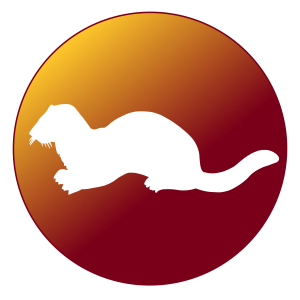 FERRETS
FERRETS
ADRENAL DISEASE
Adrenal disease is more common in ferrets in the United States, where all commercially sold ferrets are spayed or castrated when very young, than in other countries where they are left intact. Cause-and-effect has not been defined. The hypothesis is that lack of feedback from the gonads leads to overproduction of hypothalamic gonadotropin releasing hormone (GnRH) and pituitary luteinizing hormone (LH), which along with exposure to long periods of daylight leads to continuing stimulation and subsequent adrenal hyperplasia, adrenal adenoma or adenocarcinoma. The adrenal produces a variety of hormones; hyperadrenocorticism in ferrets usually is associated with hypersecretion of sex steroids (estradiol, androstenedione, and 17 alpha hydroxyprogesterone). Adrenal disease is most commonly seen in ferrets 3 years of age or older. Clinical signs include progressive alopecia of the tail, tail base and trunk; vulvar enlargement in females; stranguria (difficulty urinating) and urethral obstruction secondary to prostatomegaly (increase in prostate size) in males; and pruritus (scratching). Diagnosis can be made by demonstration of increased concentrations of sex steroids and ultrasonography demonstrating unilateral or bilateral adrenal gland enlargement. Surgical removal of abnormal adrenal tissue is recommended for animals that can tolerate anesthesia. Medical therapy can be used for palliative care; leuprolide acetate, a GnRH analog, suppresses adrenal function.
INSULINOMA
This is a tumor of the pancreatic beta cells that is seen in middle-aged to older ferrets. Excessive production of insulin is associated with profound hypoglycemia and clinical signs of a dazed appearance, hindlimb weakness or paralysis, nausea (drooling, pawing at the mouth, retching), and in the end, collapse and convulsions. Diagnosis is by demonstration of consistent hypoglycemia; a fasting blood glucose concentration less than 90 mg/dL is suspicious while one less than 70 mg/dL is strongly suggestive. Mild to moderate hypoglycemia may be manageable through a high-quality, high-protein diet. Surgical debulking of the tumor is recommended. Severe episodes of hypoglycemia are emergencies and are treated with very slow normalization of blood glucose by administration of IV dextrose. Other therapies include use of glucocorticoids, which block uptake of glucose by cells and increase hepatic gluconeogenesis, raising blood glucose concentrations, and diazoxide, which antagonizes the effect of insulin.
LYMPHOMA
Lymphoma is leukemia or solid tumors of the lymphoid tissue. It is seen in young ferrets (6 -12 months of age) and ferrets 3-5 years of age. Any lymphoid tissue may be affected including peripheral and visceral lymph nodes, spleen, liver, intestines, and bone marrow. Younger animals generally show acute onset and rapid progression of disease. Older animals have a slower onset and longer survival times. Signs are non-specific and include anorexia, lethargy, weight loss, dyspnea, and coughing. If the mediastinal lymph nodes are enlarged, regurgitation may be seen; vomiting, diarrhea, and rectal tenesmus (straining to defecate) may be seen with GI disease. On bloodwork, anemia and variations in lymphocyte number may be evident. Fine-needle aspirate or biopsy of enlarged lymphoid tissues is definitive for diagnosis. Surgical removal plus appropriate chemotherapy may induce remission for as short as 3 months to as long as 5 years. Regular monitoring (blood work, complete physical examination) every 1-3 months is recommended.
 RATS
RATS
NEOPLASIA
The most common tumor type in rats is mammary adenocarcinoma, with an incidence of 30-90% in aged females and 16% in aged males. Mammary tumors occur in middle-aged to older animals. Incidence can be decreased by spaying female rats early in life. The mammary tissue extends well beyond the ventrum and tumors may be seen on the ventrum, over the shoulders and neck, in the flanks, or at the tail base. Mammary tumors will be egg- or disc-shaped masses that are well demarcated and generally have only one large vessel. The mass will be well tolerated by the rat until it impedes movement, at which point it may be traumatized and become infected. Diagnosis is by visual inspection; an excisional biopsy can be submitted at the time of surgical removal, which is the treatment of choice. Recurrence is common. In intact female rats, concurrent ovariohysterectomy may or may not increase survival time and decrease incidence of recurrence. Another common tumor in rats is pituitary adenoma or prolactinoma. This tumor secretes prolactin and may promote development of mammary tumors. There is no definitive therapy for prolactinoma.
PNEUMONIA / MYCOPLASMOSIS
Respiratory disease is multifactorial, with environmental factors permitting infection. Mycoplasma is the most significant infectious agent causing respiratory disease in rats. It is highly contagious and rats that survive the disease may become lifelong carriers that are a source of infection to other rats. Poor husbandry can cause irritation of the respiratory tract. Specific problems include poor ventilation, use of dusty or aromatic bedding, and inadequate cage cleaning and subsequent increase in ammonia. Clinical signs include nasal discharge, noisy breathing (snuffling), labored breathing, red-brown tears, squinting, and a rough hair coat. Radiography is definitive for pneumonia and culture of nasal discharge defines specific organism and guides antibiotic therapy. If the animal is severely affected, oxygen supplementation, nebulization, and coupage may be required.
 HEDGEHOGS
HEDGEHOGS
NEOPLASIA
Tumors are very common in aged hedgehogs; in one study, 30% of hedgehogs submitted for necropsy had tumors and 10% had multiple tumor types. Types most commonly seen are skin tumors, hemolymphatic tumors, GI tumors, and endocrine tumors. Surgical removal is the preferred treatment but may not be possible with all tumors, depending on extent and metastasis, and ability of the aged hedgehog to withstand anesthesia.
DERMATOPHYTOSIS
Ringworm is a fungal infection of the skin. Incidence is increased in hedgehogs housed in warm, humid environments, and in those with external parasites. Hedgehogs may harbor ringworm fungi with no clinical signs. Overtly infected hedgehogs show quill loss, and crusting and scratching at the face and pinnae. Identification of the fungus by skin scrape or tape prep, and fungal culture are diagnostic. Treatment requires use of anti-fungal drugs, either topically (localized disease) or systemically (generalized disease). Dermatophytosis is zoonotic.
 SUGAR GLIDERS
SUGAR GLIDERS
NEOPLASIA
Tumors are most common in aged sugar gliders. Those most commonly described are hepatic tumors, lymphoid tumors, and mammary gland adenocarcinoma. Diagnosis is by visual inspection. Surgical therapy (hepatic and mammary tumors) and chemotherapy (lymphoid tumors) may be attempted, with variable success.
NUTRITIONAL SECONDARY HYPERPARATHYROIDISM
Metabolic bone disease and nutritional osteodystrophy are other names for this disorder. Calcium supports cardiac and skeletal muscle contraction, blood clotting, transmission of nervous impulses, and bones and teeth. Phosphorus also supports bones and teeth. Calcium and phosphorus must be present in a specific ratio to ensure these processes occur. Calcium is stored in bone. Normally, when calcium concentrations rise in blood, calcitonin is released and pulls calcium from the blood, depositing it in bone. When calcium concentrations are low in blood, parathormone increases absorption of calcium from the kidney and intestine and draws calcium from bone. Vitamin D is produced with exposure to ultraviolet light (UVB) and increases absorption of calcium. Nutritional secondary hyperparathyroidism is a disorder of husbandry. Animals fed a diet with inappropriately low calcium and/or inappropriately high phosphorus will perceive themselves to be in a hypocalcemic state and will produce excessive parathormone, leading to weakening of the bones and teeth, and abnormal cardiac and nervous functions. In sugar gliders, this condition most often is seen in those animals on a primarily fruit diet with occasional insects or other protein sources. Clinical signs include hindlimb paralysis, muscle tremors, pathologic bone fractures, and occasional seizures. Radiography is definitive; findings include osteoporosis of the vertebral column, pelvis, and long bones. Low serum calcium concentrations will be seen on bloodwork. Treatment includes administration of calcium and vitamin D, correction of the diet, and strict cage rest.
 AMPHIBIANS
AMPHIBIANS
RED-LEG SYNDROME
This disorder is also called pink belly disease and its official name is bacterial dermatosepticemia. This occurs most commonly in frogs and toads. This condition is due to infection with Gram negative bacteria and is associated with poor maintenance of substrate, poor water quality, and inadequate filtration in amphibian habitats, and also with overfeeding, skin trauma, and low dietary vitamin A. Clinical signs include pale pink or red lesions on the pale areas of the body including the hind legs and ventrum, ocular lesions including abnormal placement of the globe of the eye within the eye socket and corneal edema, anorexia, lethargy, prolapse of the stomach or cloaca, hemoptysis (vomiting or regurgitating blood), twitching, convulsions, and sudden death. Diagnosis is by visual inspection. Treatment with antibiotics can be attempted and biosecurity to prevent spread to other animals is vital. Prognosis is poor, with reported mortality rate of 81-100%.
NUTRITIONAL SECONDARY HYPERPARATHYROIDISM
Metabolic bone disease and nutritional osteodystrophy are other names for this disorder. Calcium supports cardiac and skeletal muscle contraction, blood clotting, transmission of nervous impulses, and bones and teeth. Phosphorus also supports bones and teeth. Calcium and phosphorus must be present in a specific ratio to ensure these processes occur. Calcium is stored in bone. Normally, when calcium concentrations rise in blood, calcitonin is released and pulls calcium from the blood, depositing it in bone. When calcium concentrations are low in blood, parathormone increases absorption of calcium from the kidney and intestine and draws calcium from bone. Vitamin D is produced with exposure to ultraviolet light (UVB) and increases absorption of calcium. Nutritional secondary hyperparathyroidism is a disorder of husbandry. Animals fed a diet with inappropriately low calcium and/or inappropriately high phosphorus will perceive themselves to be in a hypocalcemic state and will produce excessive parathormone, leading to weakening of the bones and teeth, and abnormal cardiac and nervous functions. Lack of adequate exposure to UVB light and subsequent low vitamin D concentrations inhibits absorption of calcium from the diet. In amphibians, lipoproteins transport vitamin D so animals fed a diet too low in lipoproteins may show clinical signs even if dietary calcium concentrations are appropriate. Affected amphibians will be presented with obvious skeletal deformities, abnormal posture, splayed legs, fractures, bloating, and paralysis. Diagnosis by radiography is definitive; bones will have reduced cortical density and fractures may be evident. Treatment includes increasing calcium in the diet and ensuring appropriate lipoprotein concentrations. Animals should be handled carefully, placed on strict cage rest, and housed with no cage mates until bone strength returns. UVB lighting should be available to increase vitamin D production. Pain medications can be used if fractures are present.
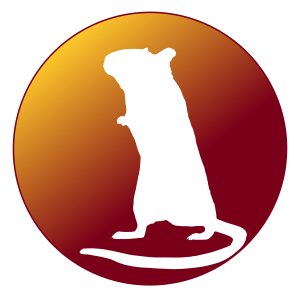 GERBILS
GERBILS
NEOPLASIA
Neoplasia is very common in gerbils over 2 years of age, with reported incidence of 8-27%. Ovarian tumors are most common, followed by skin tumors. Ovarian tumors are associated with abdominal distension and in breeding animals, with infertility. The most common skin tumor is squamous cell carcinoma of the ventral abdominal scent gland. This tumor often is associated with secondary bacterial infection. The gland will appear inflamed or ulcerated. Biopsy of the gland helps differentiate benign from malignant neoplasia. Surgical removal generally is the treatment of choice for all tumors. Appropriate antibiotic therapy can be used to control secondary bacterial infections.
ABSCESSES
Abscesses can form anywhere on the body and usually develop after some sort of skin injury and colonization of normal skin flora at the site. The predominant clinical sign is a lump with localized hair loss above it. Diagnosis is by visual inspection. For treatment, abscesses can be lanced, the defect rinsed with antiseptic, and appropriate antibiotic therapy instituted.
 MICE
MICE
NEOPLASIA
The most common tumor type in mice is mammary adenocarcinoma, with an incidence of 30-70% in aged females. Other common tumors include squamous cell carcinoma, adenoma, fibroma, and fibrosarcoma. Mammary tumors occur in middle-aged to older animals. Some strains of mice have a very high incidence of spontaneous neoplasia and some mammary tumors are associated with retrovirus. The mammary tissue extends well beyond the ventrum and tumors may be seen on the ventrum, over the shoulders and neck, in the flanks, or at the tail base. Tumors are soft, highly vascular, and highly infiltrative, and readily metastasize to the lungs. Diagnosis is by visual inspection. Surgery is not recommended as it rarely is curative and is associated with extensive tissue damage.
PNEUMONIA
Pneumonia in mice generally is bacterial; viral agents and mycoplasma also may be causative. Signs are variable and include dyspnea with an extra abdominal component, snuffling, and purulent discharge on the nose and on the front paws from grooming. Sudden death may be the first sign of disease. Diagnosis is by visual inspection. Gram staining of nasal discharge may help guide antibiotic treatment. Treatment includes supportive care and antibiotic therapy.
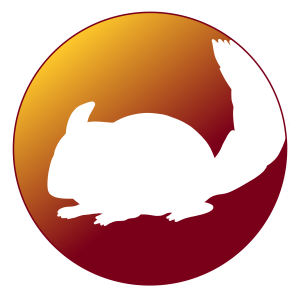 CHINCHILLAS
CHINCHILLAS
DENTAL DISEASE
Both the incisors and the cheek teeth are open-rooted and continuously growing. Possible causes of dental disease include lack of a fibrous diet or other things to chew on to grind down the teeth, and malocclusion. This disorder is most common in middle-aged to older chinchillas. Clinical signs include anorexia, dysphagia (difficulty eating), decreased fecal output, weight loss, hypersalivation, and, in those with tooth root abscesses, swelling of the jaw and ocular / nasal discharge. Diagnosis is by visual inspection. Obvious malocclusion or tooth overgrowth, formation of sharp enamel points on the cheek teeth +/- oral ulceration, food impaction, and abnormal spacing between teeth may be evident on superficial oral examination. Because of the small size of the oral cavity and likelihood of significant dental disease that is not grossly evident, sedation for a full oral examination and radiographs of the skull are recommended. Trimming with a rotating dental burr in the sedated animal is the treatment of choice. Clipping instruments should not be used as they may crush or fracture the teeth. Increase roughage in the animal’s diet to increase tooth wear.
CONJUNCTIVITIS
The conjunctiva is the supportive soft tissue around the globe of the eye. Inflammation occurs with excessive dust bathing, inadequate ventilation in the cage, or obstruction of the nasolacrimal duct as may occur secondary to dental disease. Bacterial infection is opportunistic, as normal flora colonize the inflamed tissues. Diagnosis requires a thorough ophthalmic examination and staining of the eye with fluorescein to define any corneal defects. A conjunctival swab should be submitted for culture. Treatment involves (i) flushing the conjunctival sac with saline, (ii) use of a species-appropriate ophthalmic antibiotic, and (iii) prohibiting dust bathing until conjunctivitis is resolved (generally about 14-21 days).
 SNAKES
SNAKES
DYSECDYSIS
Dysecdysis is improper shedding. Remember the normal process of shedding (ecdysis): Snakes have small overlapping scales on the dorsum and sides and have ladder-like short, wide scales on their ventrum, called scutes. New scales form over the entire animal under the old scales. Lymphatic fluid accumulates between the new and old scales, dulling the appearance of the skin and markings, and making the spectacles (the scales over the eyes) opaque. The skin clears about 3-4 days before shedding begins. The snake will rub to start the shed and generally will shed the whole skin in one piece. Dysecdysis occurs when scales are not shed. Improper shedding may be due to external parasites, fungal or bacterial skin disease, hypothyroidism (low concentrations of thyroid hormone in the body) or other systemic conditions, hypoproteinemia (low protein concentration in blood), or poor husbandry (cool environment, dry environment, improper nutrition, lack of materials to rub against in the cage). Retained scales are most common on the tail and the head, including the spectacles. Diagnosis is by visual inspection. Treatment includes (i) warm water soaks (77-85°F for 15-60 minutes followed by gentle pulling of old scales with a piece of gauze, exercising great caution over the spectacles; (ii) correction of underlying husbandry issues, and (iii) treatment for underlying diseases.

